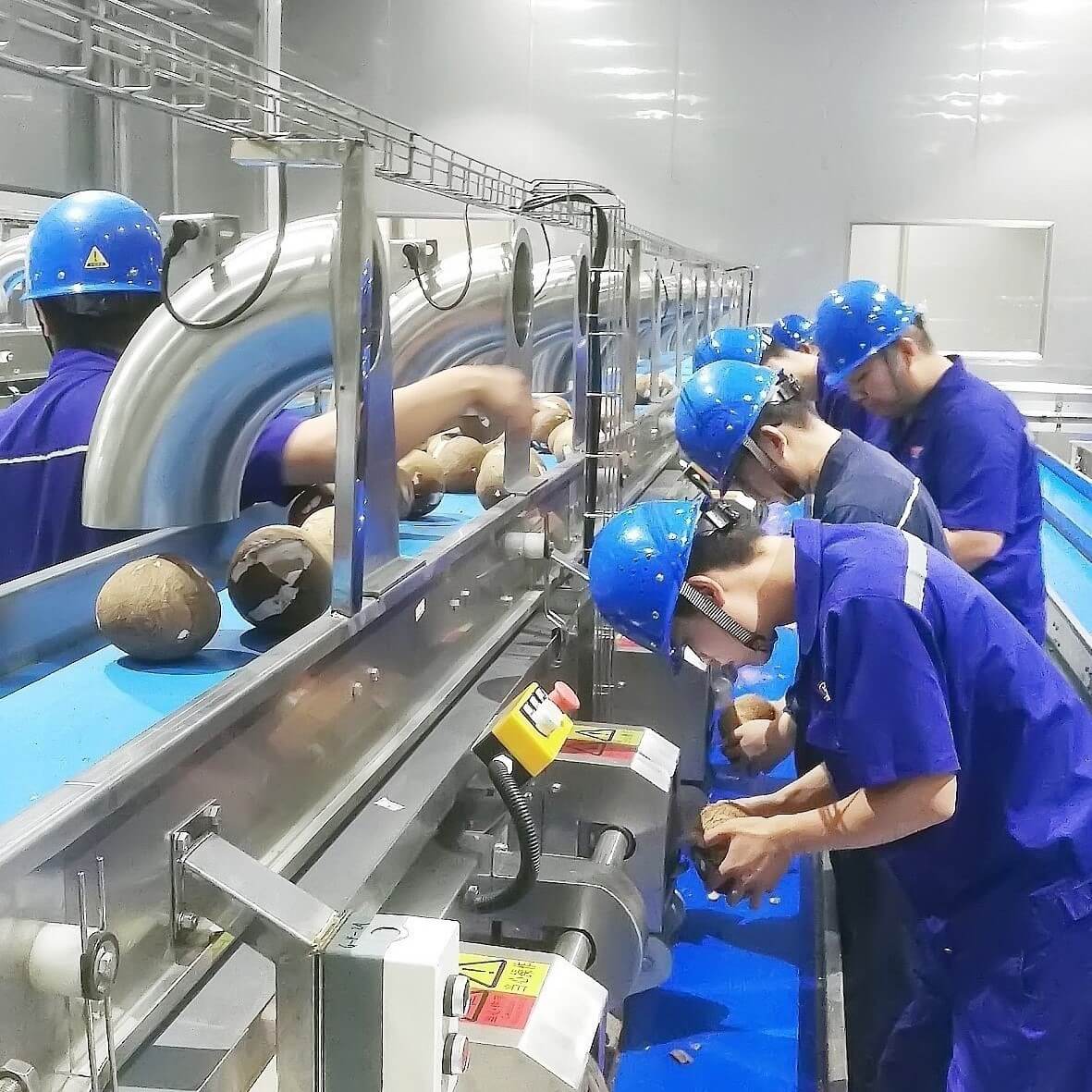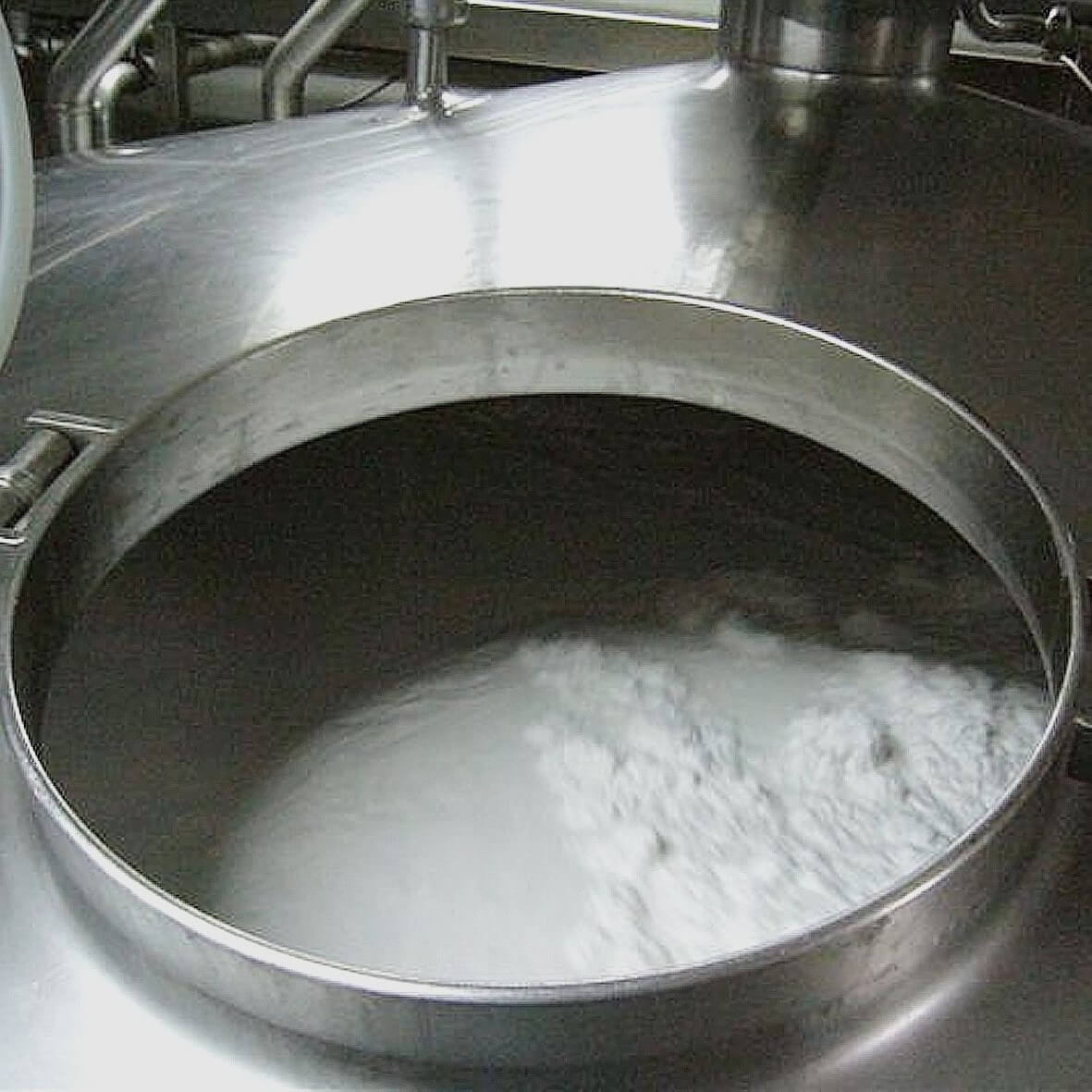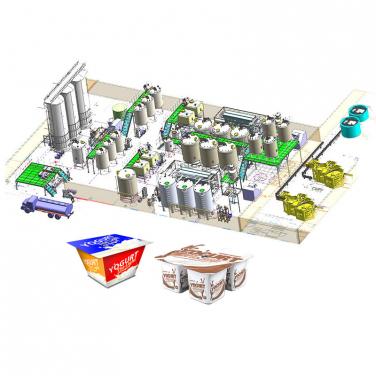
The market demand for coconut products has shown a steady growth trend in the past few years. This is mainly due to people's increasing attention to healthy food and natural products, as well as recognition of the various benefits brought by coconut products.The market demand for coconut products is constantly growing, and consumers are increasingly recognizing their health, naturalness, and versatility. With people's pursuit of a healthy lifestyle and preference for natural products, coconut products are expected to continue to maintain a good development momentum in the market.
The preparation of a coconut processing plant needs to consider the following aspects:
1. Market research: Firstly, it is necessary to conduct market research to understand the demand for coconut and its processed products in the market, including coconut water, coconut oil, coconut powder, etc. Market research can determine the market positioning and sales strategy of the product.
2. Site selection and site planning: Select a suitable location for building a coconut processing plant and carry out site planning. Considering the origin and transportation costs of coconuts, it is best to choose a location close to the coconut growing area in order to obtain fresh coconut raw materials.
3. Equipment procurement: Purchase suitable processing equipment based on the type and scale of processed products. For example, the production of coconut water requires equipment such as coconut husking machines and juicers; The production of coconut oil requires equipment such as coconut shellers and mixers. Ensure that the quality and performance of the equipment can meet production needs.
4. Raw material supply: Establish cooperative relationships with coconut growers or wholesalers to ensure stable supply of coconut raw materials. At the same time, it is necessary to ensure the quality and safety of raw materials, and comply with relevant food safety standards and regulations.
5. Production process and quality control: Develop a production process flow for coconut processing and establish a strict quality control system. Ensure stable product quality and compliance with relevant food safety standards.
6. Personnel recruitment and training: Recruit and train suitable employees based on production scale and demand. Including production operators, quality inspectors, equipment maintenance personnel, etc. Train employees in skills and knowledge to improve production efficiency and product quality.
7. Marketing promotion: Develop marketing strategies to promote coconut processing products. Sales can be conducted through online and offline channels, such as supermarkets, e-commerce platforms, etc. At the same time, establish a brand image and enhance the market competitiveness of the product.
8. Compliance management: Comply with relevant laws, regulations, and food safety standards to ensure the compliance of the production process. Establish a sound food safety management system to ensure the quality and safety of products.
The above are some of the main aspects of preparation for coconut processing plants, which require detailed planning and implementation based on actual situations.
Coconut processing line is a production line used for processing and processing coconuts. It is usually composed of a series of equipment and machinery aimed at converting raw coconut into various coconut products, such as coconut oil, coconut powder, coconut water, and coconut milk.
The following are some of the main equipment and steps that may be included in a coconut processing line:
1. Coconut shell removal: This is the first step in removing the outer hard shell of coconuts. Manual or automatic equipment can be used for shell removal operations.
2. Coconut separation: In this step, the outer shell and inner flesh of the coconut are separated. This can be achieved through mechanical devices or manual operations.
3. Coconut crushing: Crush the coconut flesh into smaller chunks for subsequent extraction and processing. You can use a cutting machine to complete this step.
4. Coconut extraction: This is the process of extracting coconut oil from coconut flesh. Usually, pressing or solvent extraction methods are used.
5. Coconut powder preparation: Dry and grind the coconut flesh into a powder, which is used to make coconut powder or other coconut products.
6. Coconut water extraction: Coconut water is extracted from the inside of the coconut, which can be achieved by cutting the coconut or using specialized coconut water extraction equipment.
7. Coconut milk preparation: Mix coconut meat with water, heat and stir to make coconut milk. This process usually includes steps such as stirring, filtering, and sterilization.
The above are just some basic steps and equipment that may be included in the coconut processing line. The actual processing line may vary depending on product requirements and production scale.

Coconut processing line equipment is mainly used for coconut processing and processing, including coconut husking, coconut water extraction, coconut meat crushing, coconut oil extraction, etc. The following are common coconut processing line equipment:
2. Coconut water extractor: used to extract water from the inside of coconuts, usually by pressing or centrifugation to separate coconut water from coconut residue.
3. Coconut meat processing machine: used to crush the pulp inside coconuts into small particles, usually using a blade or mixer for crushing, for subsequent coconut oil extraction or other processing.
4. Coconut oil extractor: used to extract coconut oil from coconut meat, usually by pressing or solvent extraction, to separate coconut oil from coconut residue.
5. Coconut dryer: used for drying coconut meat or coconut residue, usually using hot air or vacuum drying for subsequent processing or storage.
6. Coconut crusher: used to crush coconut meat or coconut residue, usually using high-speed rotating blades or grinders to obtain delicate coconut powder.
7. Coconut thickener: used to concentrate coconut water or coconut juice, usually through evaporation or vacuum concentration to obtain concentrated coconut liquid.
The above are some common coconut processing line equipment, and different processing requirements may vary. When selecting equipment, it is necessary to consider factors such as production scale, processing technology, and product quality, and ensure that the equipment complies with relevant safety and health standards.
The highlights of coconut processing line mainly include the following aspects:
1. Automated production: The coconut processing line adopts advanced automation equipment and technology, which can achieve a series of automated operations from coconut shelling, peeling, cutting, juice extraction, coconut oil extraction, and other processing steps. This not only improves production efficiency, but also reduces labor costs and intensity.
2. Multifunctionality: Coconut processing lines can be adjusted and configured according to different needs and product types, achieving processing operations with multiple functions. For example, various coconut products such as coconut juice, coconut powder, and coconut oil can be produced to meet the diverse needs of the market.
3. High quality products: The coconut processing line uses high-quality raw materials and strict production processes to ensure that the coconut products produced have high quality and hygiene safety. Meanwhile, through precise control and monitoring systems, product consistency and stability can be ensured.
4. Environmental protection and energy conservation: Coconut processing lines pay attention to environmental protection and energy conservation in their design and operation. By utilizing resources reasonably, reducing the generation of waste and wastewater, and using low-energy equipment and technology, environmentally friendly production has been achieved.
5. Intelligent management: The coconut processing line is equipped with an advanced intelligent management system, which can monitor and control various parameters and indicators in the production process in real time. Through data analysis and optimization adjustments, production efficiency and product quality have been improved, and problems can be identified and resolved in a timely manner, enhancing the level of refinement in production management.
In summary, the highlights of coconut processing lines lie in their advantages in automated production, multifunctionality, high-quality products, environmental protection, energy conservation, and intelligent management, providing strong support for the development of the coconut processing industry.
The operation and maintenance of coconut processing lines are key to ensuring efficient, safe, and stable operation of the production process. The following are the general steps and precautions for operating and maintaining a coconut processing line:
1. Operation steps:
a. Preparation work: Check the integrity of equipment and tools to ensure that all necessary materials and raw materials are ready.
b. Starting equipment: Follow the operation manual or instructions to start the equipment on the coconut processing line, such as coconut husking machine, shelling machine, juicer, etc.
c. Feeding and processing: Put the coconut into the corresponding equipment for processing, such as breaking, removing, and juicing.
d. Monitor the production process: closely monitor equipment operating status, temperature, pressure and other parameters to ensure the normal operation of the production process.
e. Adjustment operation: Adjust the equipment parameters according to the actual situation to achieve the best processing effect.
f. Regular maintenance: Clean, lubricate, and maintain the equipment regularly to ensure its normal operation.
2. Precautions:
a. Safe operation: Operators should wear appropriate personal protective equipment, such as gloves, safety glasses, etc., to ensure safe operation.
b. Equipment maintenance: Regularly maintain and upkeep the equipment, clean the surface of the equipment, and replace worn parts to extend its lifespan.
c. Cleanliness and hygiene: Keep the processing line clean and hygienic to prevent impurities from contaminating the product.
d. Quality control: Strictly control the quality of raw materials and finished products to ensure that products meet hygiene standards and customer requirements.
e. Operation monitoring: closely monitor the operation status of equipment, promptly identify and solve potential problems, and avoid production interruptions or quality issues.
f. Training and development: Provide necessary training and skill development for operators to ensure they possess correct operating skills and safety awareness.
The above are the general operation and maintenance steps and precautions for coconut processing lines. The specific operation and maintenance should be adjusted according to the type and scale of the equipment. In the operation and maintenance process, safety and quality should always be the top priority, and flexible adjustments and improvements should be made according to the actual situation.

The environmental protection and energy conservation of coconut processing lines are important issues, which involve resource utilization, waste treatment, and energy consumption in the production process. The following are some measures and methods for environmental protection and energy conservation in coconut processing lines:
1. Resource utilization: During coconut processing, various parts of the coconut should be fully utilized as much as possible. For example, coconut shell can be used as biomass fuel or made into charcoal, coconut fiber can be used to make ropes or textiles, and coconut water can be used as a raw material for beverages or other products. By making reasonable use of the various components of coconut, resource waste can be reduced.
2. Waste treatment: The waste generated during coconut processing should be effectively treated. For example, coconut shells can be burned or pressed into charcoal, and coconut residue can be used as organic fertilizer or animal feed. By scientifically and reasonably handling waste, environmental pollution and resource waste can be reduced.
3. Energy saving measures: In coconut processing lines, energy-saving measures should be taken to reduce energy consumption. For example, using efficient and energy-saving equipment and machinery, optimizing production processes, and reducing energy consumption. In addition, arrange production plans reasonably to avoid unnecessary energy waste.
4. Environmental monitoring: Establish an environmental monitoring system for coconut processing lines, regularly monitor and evaluate the environmental impact during the production process. By monitoring data, problems can be identified in a timely manner and corresponding measures can be taken to improve, ensuring that the production process meets environmental protection requirements.
5. Propaganda and education: Strengthen the cultivation of environmental protection and energy-saving awareness among coconut processing line employees, and enhance their awareness of the importance of environmental protection. Through publicity and education, encourage employees to actively participate in environmental protection and energy conservation and emission reduction work, and form an environmental protection atmosphere where all employees participate.
In short, the environmental protection and energy conservation of coconut processing lines need to comprehensively consider multiple aspects such as resource utilization, waste treatment, and energy-saving measures. Only by taking scientific and reasonable measures throughout the entire production process can sustainable development of coconut processing be achieved.
Shanghai Beyond Machinery Co., Ltd
Beyond Machinery specializes in the design and manufacturing of Coconut Processing Plant. Please contact us now, and our professional technical engineers will customize the equipment plan for Coconut Processing Plant and provide a quotation. Please contact us now to obtain the latest equipment plan and quotation.



